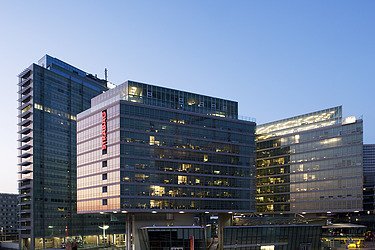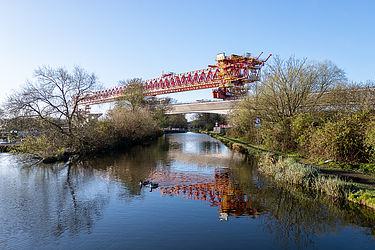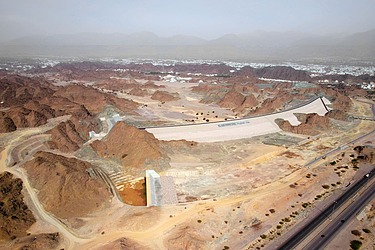Corporate Governance
Responsible governance is a top priority for STRABAG SE. We are therefore fully committed to the Austrian Code of Corporate Governance (ÖCGK).

Corporate Governance Report
At STRABAG, we are committed to responsible, transparent and long-term corporate governance in order to assure the continued existence of the company and sustainable value creation. In doing so, we aim to strengthen the trust of our stakeholders. You can find out more in our Corporate Governance Report.
Articles of Association

Articles of Association of STRABAG SE
Formal obligation and evaluation to the Austrian Code of Corporate Governance (ÖCGK)
We are fully and without exception committed to the Austrian Code of Corporate Governance (ÖCGK) and its objectives and see compliance with all the rules contained within the Code as a top priority. This commitment serves to strengthen the confidence of shareholders and to continuously optimise our high internal legal, behavioural and ethical standards.
The Management Board and the Supervisory Board of STRABAG SE declare that STRABAG SE fulfils all L-rules of the Code and complies with all C-rules or deviates from them for good reason:
-
Rule C-2 ÖCGK
On the basis of a resolution passed by the Annual General Meeting, the shares of STRABAG SE include two special registered shares with an associated right to nominate one member of the Supervisory Board each. Registered share No. 1 is held by Klemens Peter Haselsteiner1 and No. 2 by MKAO “Rasperia Trading Limited”. As MKAO “Rasperia Trading Limited” is subject to EU sanctions, its right to nominate a member of the Supervisory Board is currently suspended. The right to nominate associated with registered share No. 1 binds a significant shareholder group more strongly to the company and guarantees the availability of know-how for Supervisory Board. This is in the interest of good corporate governance and represents a long-term advantage for STRABAG SE, which further benefits especially from the commitment, expertise and experience of the respective Supervisory Board member.
1 Klemens Peter Haselsteiner passed away on 17 January 2025; the probate proceedings are currently ongoing. -
Rule C-27 ÖCGKIt is a key concern for STRABAG SE that the remuneration of the Management Board members be made according to measurable criteria in a way that is transparent and easily comprehensible. The remuneration of the Management Board is based on the specific tasks and responsibilities as well as the size and the economic situation of the company. Another factor that is considered is the competitiveness of the remuneration on the market. The variable component of the remuneration takes into account the shareholders’ interest in a positive development of the company and increases the motivation of the Management Board to take measures that sustainably improve the net income in the long term. The variable remuneration is measured on the basis of financial indicators that best reflect the long-term success and economic situation of the company. Non-financial performance criteria that can be applied across the Group are being evaluated, but currently still pose a significant challenge in terms of defining, measuring and controlling corresponding target values (key performance indicators). A differentiated and separate definition of non-financial performance criteria for each division would be detrimental to transparency and ease of understanding. As a result of thorough debate in the Executive Committee of the STRABAG SE Supervisory Board, the decision was made not to use non-financial criteria to calculate the remuneration of the members of the Management Board.
In keeping with C-Rule 62 of the Austrian Code of Corporate Governance, STRABAG SE regularly subjects its compliance with the Code to an external evaluation every three years. The last evaluation, for the 2022 financial year, was performed in 2023 by THALER.legal Rechtsanwalts GmbH, Vienna. The evaluation revealed no indications that the declarations provided by the Management and Supervisory Board members regarding observation of and compliance with the C-Rules of the Austrian Code of Corporate Governance were untrue. The C-Rules of the Code were complied with – inasmuch as these were included in the formal obligation of STRABAG SE. Some rules did not apply to STRABAG SE during the evaluation period.

Austrian Code of Corporate Governance (January 2023 version)

ÖCGK Formal Obligation Declaration (January 2023 version, only available in German)

Corporate Governance Evaluation Report 2022 (only available in German)
Risk management
The STRABAG Group encounters many different risks and opportunities in the course of its business activities. These risks are systematically identified and assessed using a proactive risk management system and managed in a consistent and goal-oriented manner through an appropriate risk management policy. This risk management policy is an integral part of the management system and describes a set of fixed principles and responsibilities for risk management and how to deal with the material risk categories. You can find all of the details concerning this in the Annual and Sustainability Report 2024.
Business Compliance
We consider the prevention of corruption and anti-competitive behavior to be a key management task. Even though STRABAG generates the majority of its sales in countries where the risk of corruption is low, due to its international orientation it also operates in countries that are exposed to an increased risk of corruption according to the Corruption Perceptions Index. Accordingly, transparent procedures to minimize risk are required in all regions, particularly in the contract award phase or when negotiating with partner companies and subcontractors.
STRABAG therefore implemented an ethics business compliance system back in 2008 and has been continuously developing it ever since. Details can be found here.
Capital Market Compliance Guidelines

STRABAG SE Capital Market Compliance Guidelines
The Supervisory Board and its Committees
The Supervisory Board of STRABAG SE currently consists of ten members and is made up of six shareholder representatives and four employee representatives. The Chairwoman of the Supervisory Board is Kerstin Gelbmann.
Executive Committee |
Presidential and Nomination Committee |
Audit Committee |
|
|---|---|---|---|
| Kerstin Gelbmann | x |
x |
x |
| Erwin Hameseder | x |
x |
x |
| Andreas Brandstetter | x |
||
| Andreas Batke | x |
||
| Georg Hinterschuster | x |
x |
Further information on the Supervisory Board members can be found here.
Remuneration report and remuneration policy

Remuneration report for the Management and Supervisory Board for the 2024 financial year

Remuneration policy for the Supervisory Board

Remuneration policy for the Management Board


